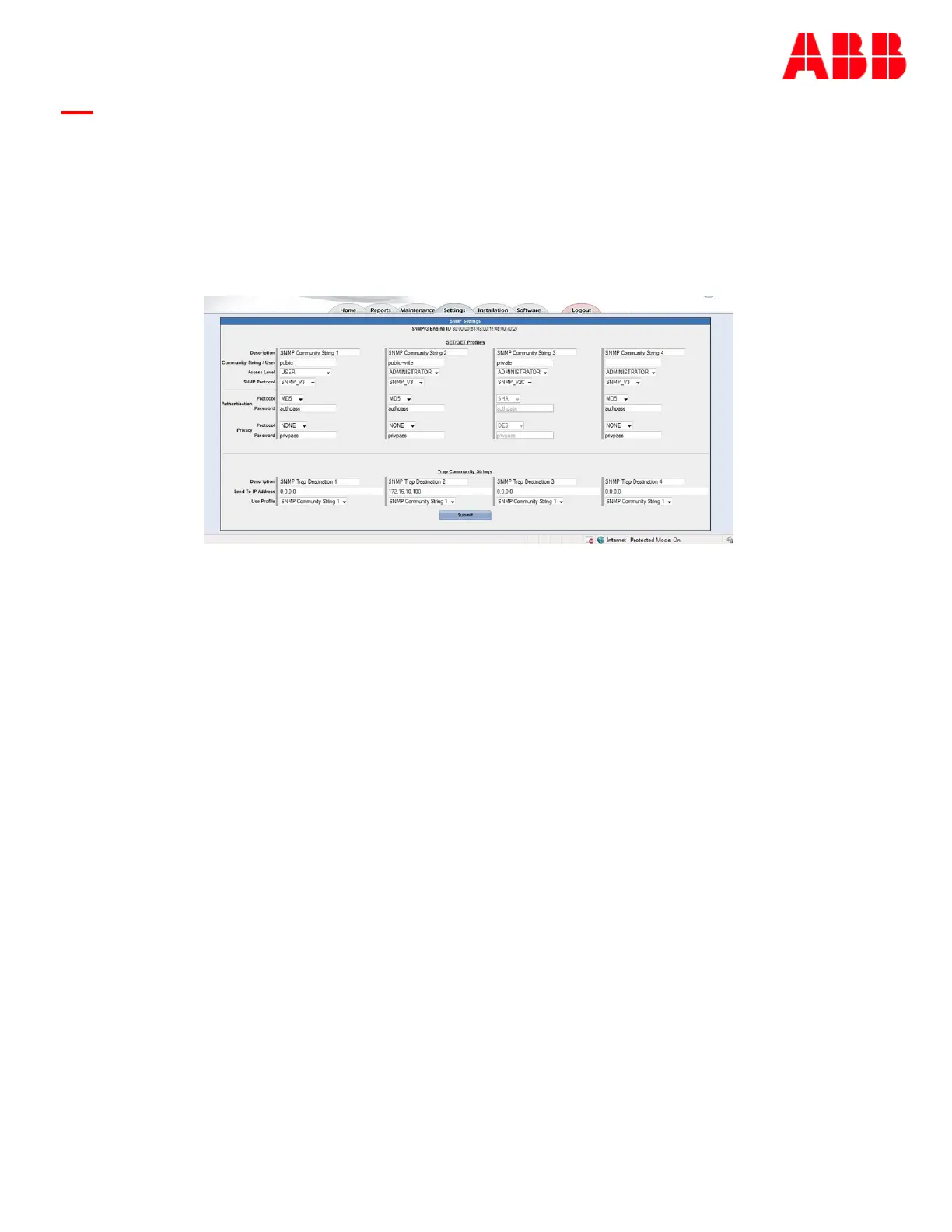Page 197
© Copyright 2021 ABB. All rights reserved.
Figure 32: SNMP Settings Screen
SNMP
In addition to supporting the basic protocols on TCP/IP, the controller supports conveying system
alarm and control information to a Network Operation Center (NOC) using the Simple Network
Management Protocol (SNMP). The controller implements the secured SNMPv3 as well as the SNMPv2C
agent that is backwards compatible with SNMPv1. The various configuration items for the protocols
can be found in the Settings ▶Communication ▶ SNMP web screen depicted below.
For security reasons the SNMPv1/v2c community string and SNMPv3 user information can only be
modified when logged in as administrator.
The controller has four SET/GET profiles that can be used as either SNMPv1/v2c community strings or
SNMPv3 users. The Community String/User field is the value of community string or username that will
be accepted by the controller. Each one of these values must be unique (or blank). The SNMP Protocol
field determines how each is used. The Access Level (User, Super-User, and Administrator) field
determines which SNMP operations are valid and the scope for each. The choices are:
• USER - has read-only access (SNMP GET operation) to data (OIDs) within the controller MIB
• SUPER-USER - has read and write access (SNMP SET and GET operations) to OIDs within the controller MIB
• ADMINISTRATOR - has read and write access to all OIDs supported by the controller
SNMPv3 users have additional protocol and password fields to support authentication and privacy.
(These fields are only accessible if the SNMPv3 protocol is selected).
Authentication protocols are NONE, MD5 and SHA. Privacy protocols are NONE, DES and AES 128-bit.
Whenever the SET/GET profiles are modified the controller will require about 15 seconds before the
changes take effect. This allows the controller type to perform the calculations necessary to create new
crypto keys.
Four Trap Community String entries allow the user to specify a target IP address (IPv4 or IPv6) for
alarm notifications (Traps) and one of the SET/GET Profiles to be used with the trap.

